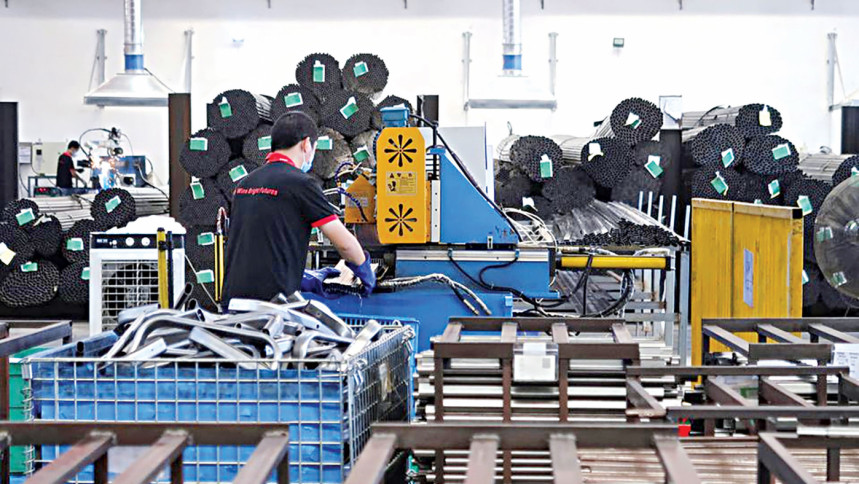China economy under pressure

China's factory output and retail sales growth slowed sharply and missed expectations in July, as new Covid-19 outbreaks and floods disrupted business operations, adding to signs the economic recovery is losing momentum.
Industrial production in the world's second largest economy increased 6.4 percent year-on-year in July, data from the National Bureau of Statistics (NBS) showed on Monday. Analysts had expected output to rise 7.8 per cent after growing 8.3 per cent in June. Retail sales increased 8.5 per cent in July from a year ago, far lower than the forecast 11.5 per cent rise and June's 12.1 per cent uptick.
China's economy has rebounded to its pre-pandemic growth levels, but the expansion is losing steam as businesses grapple with higher costs and supply bottlenecks.
New Covid-19 infections in July also led to fresh restrictions, disrupting the country's factory output already hit by severe weather this summer. Asian share markets slipped on Monday after the data showed a surprisingly sharp slowdown in the engine of global growth.
Data earlier this month also showed export growth, which has been a key driver of China's impressive rebound from the Covid-19 slump in early 2020, unexpectedly slowed in July.
Consumption, industrial production and investment could all slow further in August, analysts from Nomura said in a note, due to Covid-19 controls and tightening measures in the property sector and high-polluting industries. Production controls sent crude steel output to the lowest monthly level since April 2020 in July.
Meanwhile China tightened social restrictions to fight its latest Covid-19 outbreak in several cities, hitting the services sector, especially travel and hospitality in the country.
"Given China's 'zero tolerance' approach to Covid, future outbreaks will continue to pose significant risk to the outlook, even though around 60 per cent of the population is now vaccinated," said Louis Kuijs, head of Asia economics at Oxford Economics, in a note.
The country has also faced severe weather in several provinces, with record rainfall in Henan province last month causing floods that killed more than 300 people.
Higher commodity prices are also pressuring small and medium-sized firms in particular.
Smaller companies are unable to pass on recent rises in raw material costs to buyers, said a sales manager at a medical equipment factory in the eastern province of Jiangsu.
"We don't dare to increase our prices...but our prices cannot fall, otherwise there will be no profit at all," he said.
China's producer price inflation, which grew 9.0 per cent from a year earlier in July, will likely remain high for some time, the NBS said on Monday.
A growing number of analysts have been cutting their third quarter growth estimates for China.
The country's gross domestic product (GDP) expanded 7.9 per cent in the April-June quarter from a year earlier.
ANZ downgraded its GDP forecast for 2021 to 8.3 per cent from 8.8 per cent after the disappointing July data.
"Although they are unlikely to inject massive stimulus to boost headline growth, the central bank will maintain an easing bias," said ANZ analysts in a note.
After the central bank reduced the amount of cash banks must hold as reserves in July, many analysts expect another cut later this year to support growth.
China's central bank injected billions of yuan through medium-term loans into the financial system on Monday, which many market participants interpreted as an effort to prop up the economy, although the cost of such borrowing was left unchanged.
Policy insiders told Reuters earlier in August that China is poised to quicken spending on infrastructure projects while the central bank supports the economy with modest easing steps.
Fixed asset investment grew 10.3 per cent in January-July from the same period a year ago, compared with an 11.3 per cent rise tipped by a Reuters poll and a 12.6 per cent increase in January-June.
Property investment, a crucial growth driver of China's recovery from Covid-19 disruptions, grew 12.7 per cent in January-July, versus a 15 per cent rise in the first half of this year.
China's new home prices rose at the slowest clip in six months in July, as authorities further tightened rules in the red-hot property sector.
Source: www.thedailystar.net
